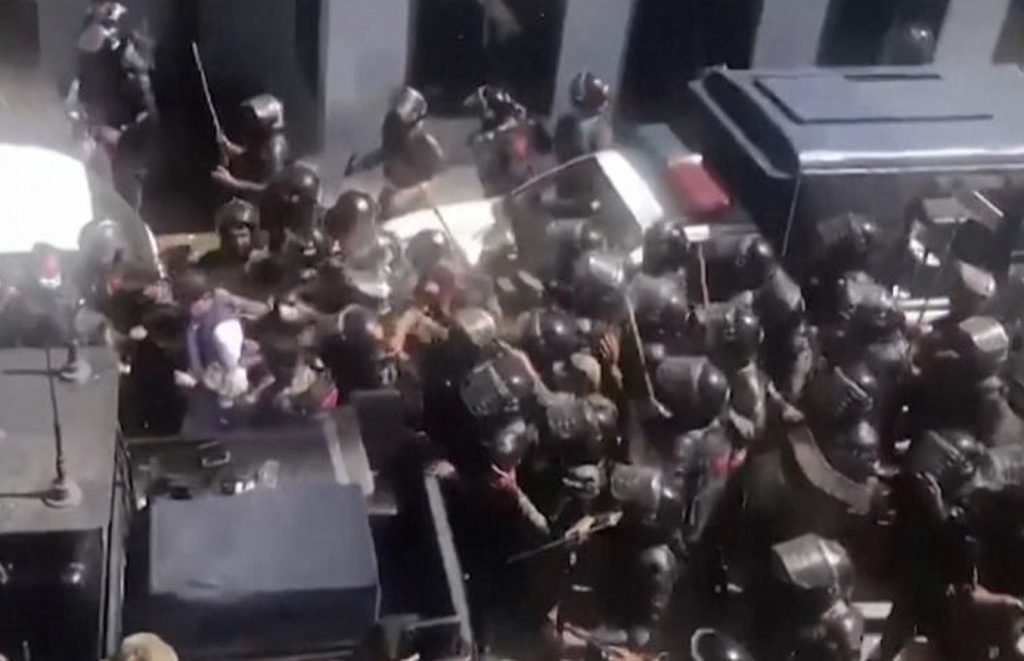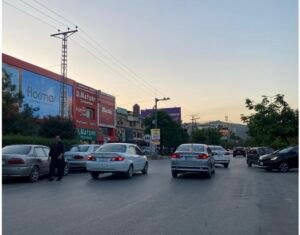Causes & Consequences of Police Vigilantism in Pakistan

By *Shinwari
The Pakistani state is often viewed as a military-led institution wherein all internal and external decisions affecting the people of Pakistan are done by the military. Little noticed and under the radar is the Police in Pakistan, a colonial era institution, which has quietly engaged in vigilantism for several decades now, either on behalf of the Pakistani state or the political elite.
Prof. Zoha Waseem in one of recent articulations online (Dissent Today, 1 May 2023) makes a compelling argument to conclude that police vigilantism has long been a central weapon of Pakistan’s authoritarian and violent politics. She adds that reliance on extra-judicial police violence has furthered specific political and economic agendas of the Pakistani security state. A number of sources, including media reports, human rights records and police investigations attest to the conclusions drawn by Zoha Waseem, an Assistant Professor of Criminology at the University of Warwick in the UK.
Statistics from across several urban areas of Pakistan provide evidence of police led violence. Data collected by Zoha Waseem in Karachi city, show that more than 3,400 people have been killed in police encounters from 2011 to 2022.
Similarly, official data from the Punjab province shows that the police killed more than 600 suspects in encounters between 2018 and 2022. Thus, on an average, more than a hundred people have been killed by the police each year over the period of reporting. VoicePK.net has compiled data for 2021 on the use of deadly force by the police, using 154 open-source articles published in the Dawn. This research concludes that at least 217 people were killed at the hands of the police, with 194 killed in encounters across Pakistan. As per these numbers, an average of 27.16 cases of police violence were reported each month in 2021. The daily average amounted to 0.9 meaning that one incident was reported every day last year.
Voicepk.net December 2021 emerged as the deadliest month, with 22 cases of encounters and 20 cases of extrajudicial killings, custodial deaths and accidental deaths reported. A total of 34 people were killed during December, out of which 30 were gunned down in encounters, three died in custody and one was an accidental civilian death during an encounter. March 2021 followed with 20 cases of encounters and 20 cases of deaths at the hands of law enforcement personnel, in which 23 were killed during shootouts and two in police custody. June reported the third highest number of reported incidents of encounters and extrajudicial killings, with 18 suspects killed in the exchange of fire with police, five in custody and two innocent persons dying in encounters reported in 18 different incidents.
Policing in Pakistan traces its history to colonial-era institutions created by the British. Writing in her book, Insecure Guardians, Zoha Waseem argues that policing is still driven by the colonial logic of policing. This enables a persistent reliance by the State upon extra-judicial police violence. The colonial structure of the police makes a clear distinction between the officer class and the lower rank and profile. Obeying orders being the main task of the lower ranks builds institutional pressure, on them to deliver. Consequently, the use of excessive force comes naturally, whether under orders from the higher echelons of the police force or not. This strategy becomes easier to adopt when police actions are framed as part of tackling national security threats, resulting in the police operating as “violence workers.” At a more generic level, the use of war metaphors like the police are “on the frontlines” and fighting the “war on terror” makes it easier for the State to justify police vigilantism as “necessary.” Such militarism and its resulting violence are also sustained because there is a persistent lack of trust in the broader criminal justice system in Pakistan.
Another factor which encourages police vigilantism is state patronage of selected police personnel. The case of Rao Anwar SSP in the 1990s is a telling instance, informs Zoha Waseem. He was groomed as a “violence worker” at a time when the biggest security threat to the State appeared to come from the Muttahida Qaumi Movement (MQM) in Karachi, and when police officers were expected and rewarded, by civilian and military elite alike, to “fight terror with terror”. But Anwar (and later, Chaudhury Aslam) were not the only officers who were patronised to serve political agendas, nor were Karachi or Sindh unique in witnessing such forms of informal policing practices.
Hassan Javid, a Professor of History at Lahore has conducted research which shows that between 2008 and 2018, the Pakistan Muslim League-Nawaz (PMLN) government in Punjab used its control of the bureaucracy, and especially the police, to influence electoral outcomes in 2013. This was enabled by the “extensive networks of patronage and clientelism” that the PML-N established.
But this was not the only period in which the PML-N exerted such influence over the police. This was similarly witnessed in the 1980s and 1990s when police encounters began to be observed in Punjab, and steadily increased between 1997 to 1999 when encounter killings were weaponized, to target PML-N’s opponents.
This was enabled in part because of a nexus between PML-N, crime, and policing in Punjab. Two notorious police officers (Naveed Saeed and Abid Boxer) were reputed “encounter specialists” in this period, and both were close to the Punjab government. Saeed particularly was known to have close links with criminal gangs (e.g., the Gogi Butt gang) and was also responsible for the killing of gangster Hanifa Baba “who coincidentally happened to be opposed to both the PML-N government and its criminal allies”.
Javid suggests that “the link between parties, crime, and the police must… be understood in the context of how governments in Pakistan have historically used their control over the police to exercise a check on their political opponents”. The need to keep this “check” on forms of political opposition (i.e., workers of opposing political parties, members of insurgent organisations, dissidents, even journalists) is what incentivizes and drives the police to take informalized action and act “off the books”, i.e., engage in police vigilantism.
Zoha Waseem concludes that police vigilantism as a strategy is unlikely to be given up by the Pakistani state, as this suits their thinking on governance. The police, first and foremost, do the “work” of the state, which is true in many parts of the world. Political elites create security threats and criminalize objects and subjects as they deem fit. Given this reality, the chances of securitization of state policy internally remain. This policy also gets ingrained because a colonial logic of policing is still being used.
Pakistan’s current predicaments are too deep for any government to start even seriously thinking of police reform to serve the people and in which, police accountability and transparency are the watchwords. This also means that police vigilantism will, for most of the time, remain under-investigated. Pakistan has a long way to go!
* Author chooses a single pseudonym. Shinwari is a freelance journalist based in Peshawar, Pakistan.
Note: The contents of the article are of sole responsibility of the author. Afghan Diaspora Network will not be responsible for any inaccurate or incorrect statement in the articles.









